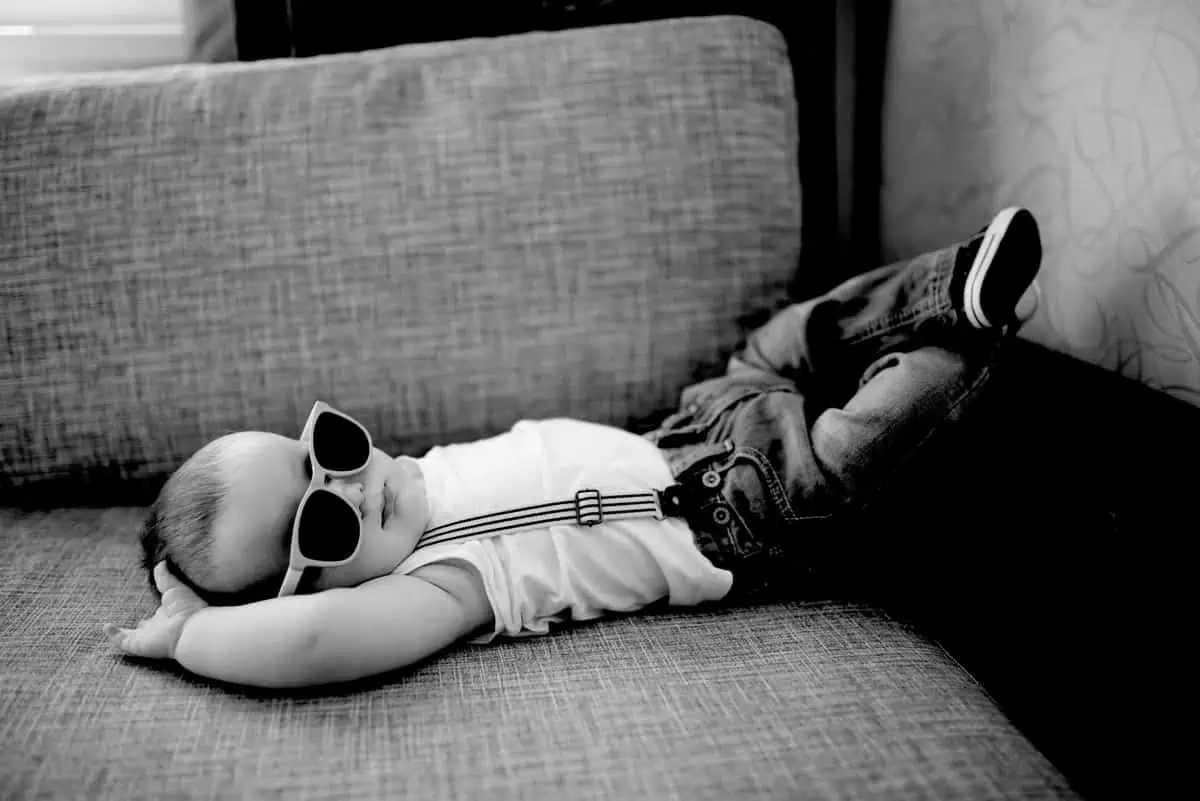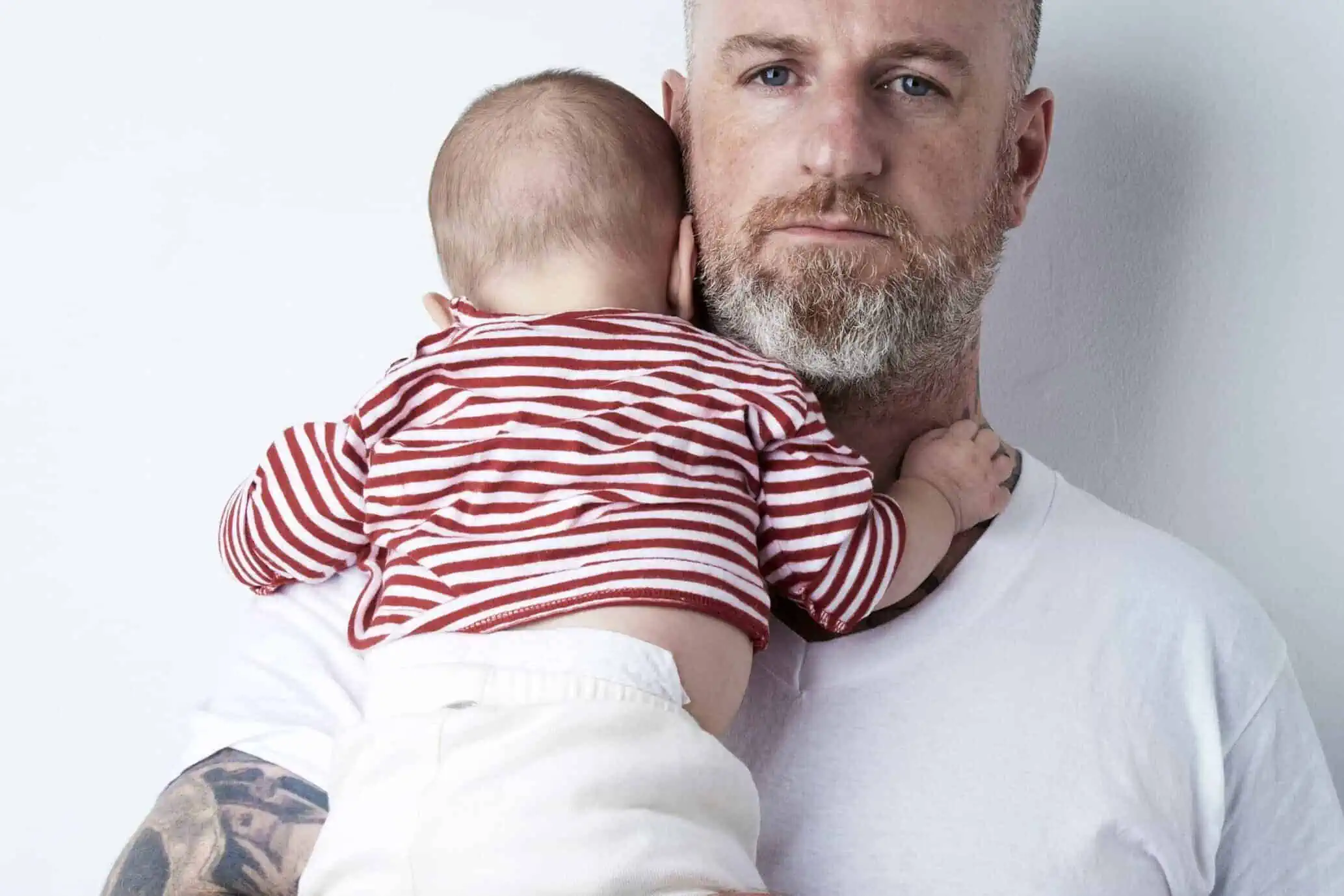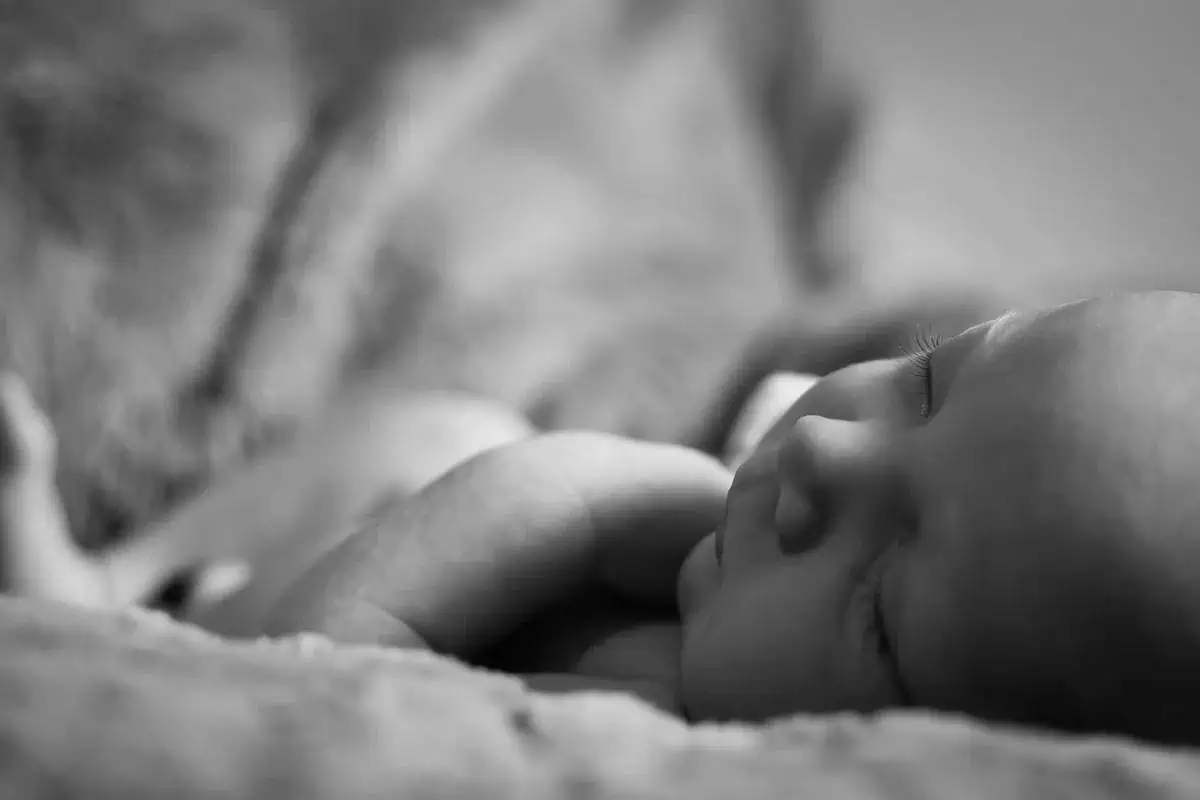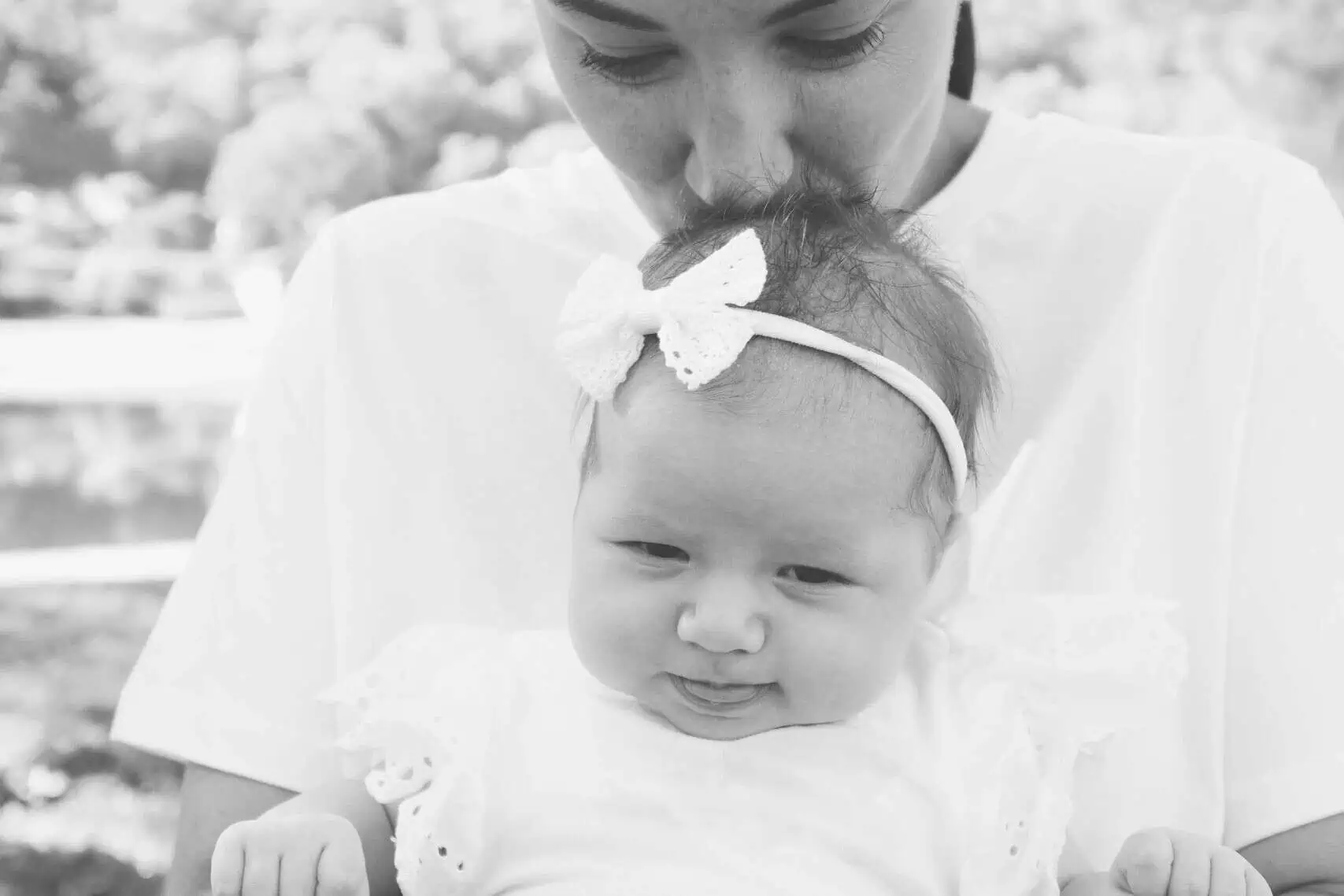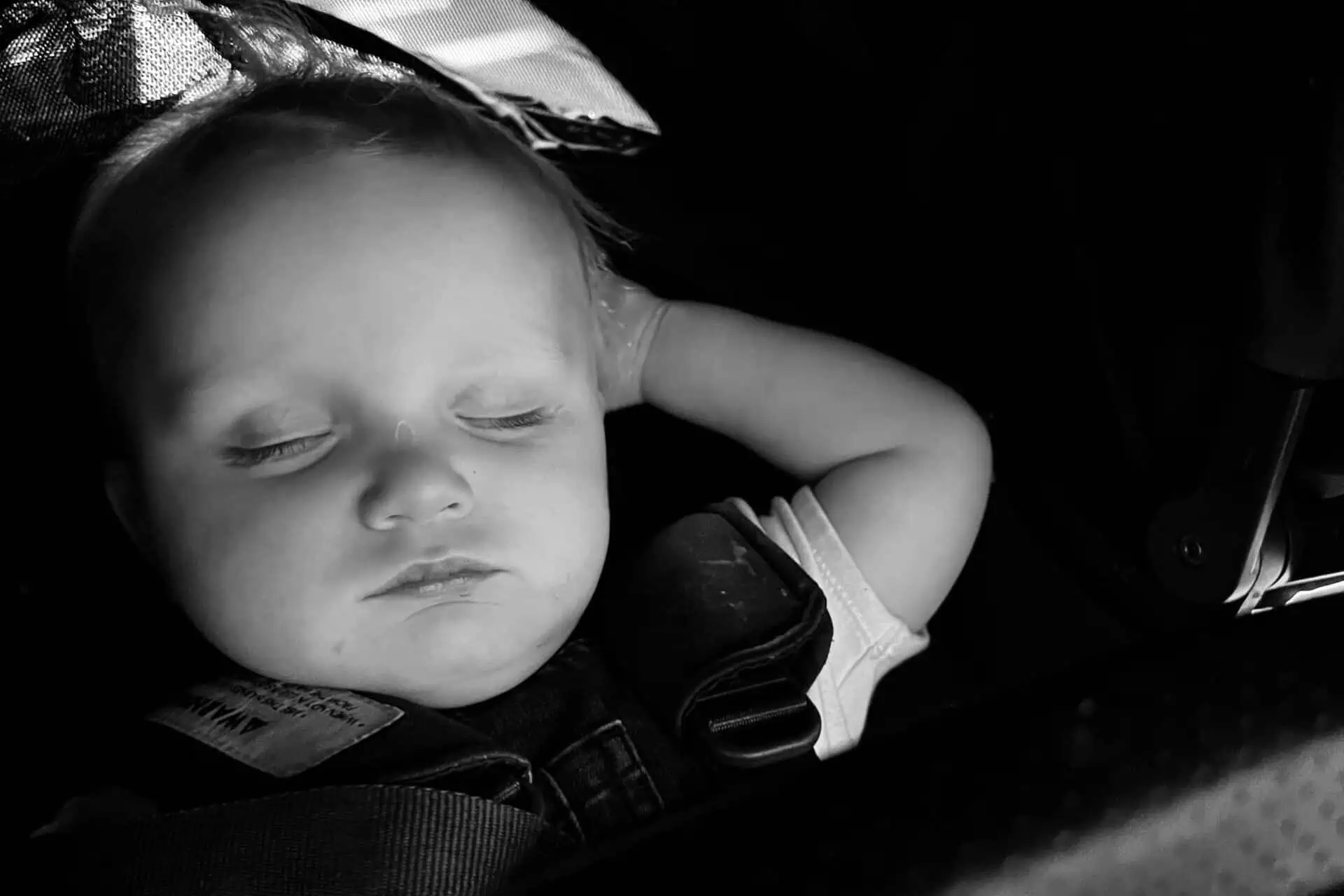The sight of a sleeping baby is the cutest and most comforting image I can imagine.
The peacefulness, the softness of those onesies, the way they hold their arms by their sides, the nearly inaudible sound of their breath, the perfect stillness of it all just looks so restful.
Or at least that’s what it looks like in the pictures.
But if your little one has started rolling over and figuring out they can move around their cot/bassinet, you may have noticed that they tend to get themselves into some very uncomfortable-looking positions.
Seriously, babies can get themselves into sleeping positions that would make a contortionist gasp in horror, and they don’t just do it to shock and amaze an audience. They actually sleep like that! This can sometimes make parents chuckle, but it mostly sends tidal waves of concern into a new parent. You are suddenly wide awake in the middle of the night, checking the baby monitor to see that your little one has somehow managed to fall asleep while propped up on their toes and their forehead for the third time in under an hour and you don’t know whether to leave them be or go in and wake them up to reposition them.
Now, one of the cornerstones for getting little ones sleeping through the night involves teaching them independent sleep skills and one of the most common questions for sleep consultants is “What am I supposed to do when my baby looks like they’re uncomfortable?” Parents don’t want to wake their baby up by moving them back to the middle of the bassinet or cot and repositioning them so they look like they’re more comfortable, but they also don’t want to leave them bunched up in the corner of their sleep space, looking like they’ve tied themselves in a knot.
The answer, as with all things parenting-related, isn’t a simple yes or no.
When it comes to sleep and safety, everything else must be shuffled down in the list of priorities. So, if, for example, your baby has learned how to roll from back to front but hasn’t yet mastered rolling themselves from front to back, then I’m sorry to say, you’re going to have to keep an eye on the baby monitor, go in every time they roll and help them roll over onto their back.
Every. Single. Time. At least until they’ve figured out how to do it on their own.
Will that delay their ability to develop their independent sleep skills? Will they wake up cranky and fussy before going back to sleep? Well, yes, probably, but if the baby’s face down on the mattress and can’t flip themselves over, you’ve got to intervene, no matter what.
The good news is that this is usually a short-term issue. Babies tend to learn how to roll from front to back quickly after they’ve learned the back-to-front manoeuvre, so you don’t need to worry about months of late-night adjustments. Spend some time during the day practicing rolling and you should see them get the hang of it within a week or two.
Now, if the baby’s gotten themselves into a position where they have a limb sticking out of the crib that could potentially get stuck or twisted when they try to move, once again, you’ll just have to bite the bullet and go in to reposition them. Do it quickly and quietly.
Now, let’s say your baby has learned to roll both ways, doesn’t have a limb at risk of injury, but has pushed themselves up against the side of their bassinet/cot and just looks uncomfortable. Should you still go in to reposition them? In this case, probably not. Babies tend to find comfort in some pretty awkward-looking positions, and as long as their airway isn’t being obstructed, (i.e., head tilted forward, nose and mouth in contact with the mattress) then it’s probably best to just let them sleep. I know it can be a little concerning to see them with their knees practically tucked under their chin, but if they’re uncomfortable, they’ll most likely wake up and rearrange themselves. There’s not usually a need for a parent to reposition them.
Remember, safety first, always! But talk to your paediatrician or GP about safe sleep positions and make informed decisions about when you should and shouldn’t move them around in their cot/bassinet. Always check RedNose.com.au for the latest safe sleep updates. Often, if they’re sleeping peacefully, they’re doing just fine, no matter how goofy they might look in the process.
And one final note, avoid letting babies of any age sleep in a positioner or nest. Many of them can force baby’s head to tilt forward and others have soft, plush sides, both of which can obstruct breathing. There has been a warning against all manner of these products and despite their claims, they increase the likelihood of SIDS.
Related Posts
16 August 2023
Sharing The Night Wakes!
16 August 2023
Why You Should Prioritise Sleep in 2023
17 October 2023
Does Sleep Training Affect Child-Parent Attachment?
27 August 2024
